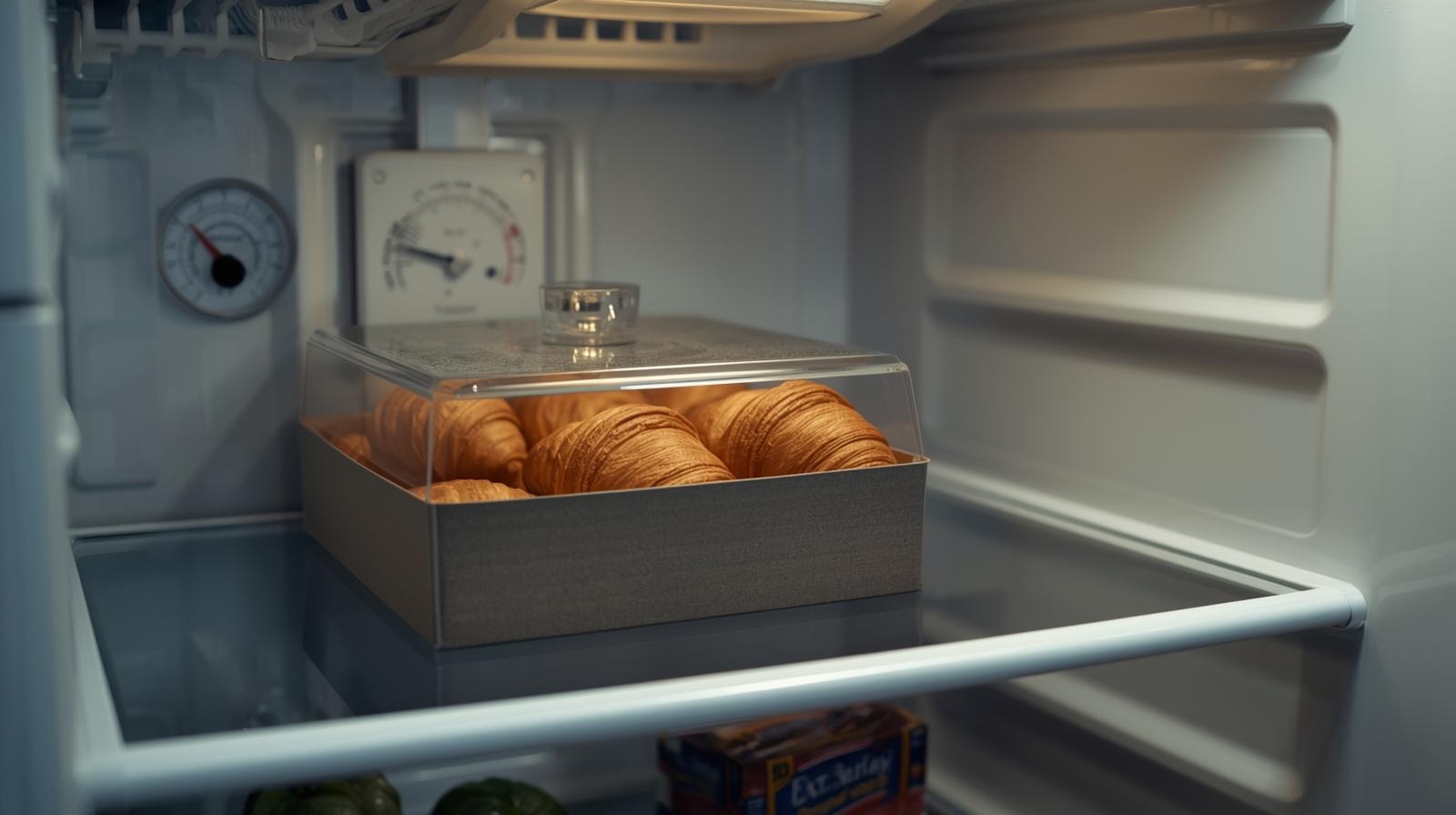
Almond Croissant in Pregnancy — The Short Answer
Yes, you can enjoy almond croissants during pregnancy when they’re fully baked and made with pasteurized dairy and eggs. Almond croissants are typically filled with frangipane—a rich almond cream made from butter, sugar, eggs, and finely ground almonds—then baked again to set the filling and crisp the crust. That second bake is your friend: it cooks the egg-containing filling and removes the risks associated with raw egg mixtures.
The practical considerations are doneness, display hygiene at bakeries, potential use of alcohol syrups, and storage/leftovers because frangipane is perishable. If you’re navigating gestational diabetes (GDM) or reflux, portioning and pairing make a big difference in how you feel after that flaky treat.
What Exactly Is an Almond Croissant?
Almond croissants (“croissant aux amandes”) are often made by slicing day-old croissants, soaking lightly in a sugar syrup, filling with frangipane, topping with more frangipane and almond flakes, and baking until set and golden. The result is a crisp exterior and a moist, almondy interior—decadent and satisfying, especially with coffee or tea.
- Frangipane: Almond cream with butter, sugar, eggs, and ground almonds—always intended to be baked inside the pastry.
- Marzipan: Dense almond paste (often no eggs) used for candying or decoration. Some bakeries use almond paste instead of frangipane.
- Finishing: A dusting of powdered sugar, sometimes syrup-brushed for sheen, and slivered almonds on top.
Pregnancy Safety Pillars for Almond Croissants
1) Fully Baked Frangipane
- Look for a set, custard-like crumb in the center—moist but not runny.
- If the center looks wet or raw, ask for a more baked piece or have it reheated thoroughly.
- Most shops bake almond croissants again after filling, which cooks the egg mixture.
2) Pasteurized Dairy & Eggs
- Butter and milk used in bakeries are usually pasteurized; confirm if you’re unsure or buying from small artisanal producers.
- Eggs are cooked during the second bake; avoid any unbaked creams piped in after baking.
3) Alcohol in Syrups (Optional)
- Some recipes add rum or amaretto to the syrup or filling. Prefer no-alcohol versions in pregnancy.
- If asking at a bakery: “Do you add any alcohol to the syrup or filling?”
4) Display Hygiene & Holding
- Choose shops with clean display cases and good turnover (fresh bakes).
- Prefer pastries that are recently baked over ones sitting for many hours at warm room temperatures.
- If taking away, keep in a cool bag on hot days and avoid leaving in a warm car.

Ordering Safely at Bakeries & Cafés
- Freshness check: Ask what time they were baked today; choose fresher batches.
- Reheat to order: If the center seems cool or damp, request a thorough warm-up so the filling is hot.
- Alcohol query: “Is there rum or any liqueur in the syrup/filling?” Choose alcohol-free.
- Display: Prefer enclosed cases; avoid pastries exposed to warm air or direct sun.
Home Reheating & DIY Almond Croissants: A Pregnancy-Smart Playbook
- Reheat right: From chilled, place on a tray and bake at 170–180 °C (340–355 °F) for 8–12 minutes until the center is hot. You’re aiming for ≥74 °C / 165 °F in the middle for leftovers.
- DIY frangipane: Use pasteurized eggs and butter. Bake the filled croissant until the frangipane is set (no wet pockets) and top is lightly browned.
- Syrup choice: Make a vanilla or orange zest syrup—no alcohol. Brush lightly; you don’t need a heavy soak.
- Storage: Cool, then refrigerate covered. Use within 2–3 days. Freeze for longer storage (wrap tightly; reheat until hot).
- Food-safe handling: Clean boards/knives between raw egg prep and baked pastries; wash hands thoroughly.
Almonds, Allergies & Easy Swaps
If you have a known nut allergy, avoid almond pastries entirely and select plain butter croissants or chocolate-filled versions (ensure pasteurized dairy). If you’re simply looking to vary fat or sugar, consider mini almond croissants or a half portion paired with fruit and yoghurt.
- No-nut option: Butter croissant with a side of pasteurized yoghurt and berries.
- Lower sugar feel: Dust lightly with powdered sugar or skip it; let the almond filling carry the sweetness.
- Flavor swaps: Orange zest, vanilla bean, or cardamom in the frangipane—no liqueurs needed.
Portions, Reflux & GDM — Feel-Good Strategies
Almond croissants are rich (butter + almond cream). Many pregnant diners feel their best with a smaller pastry or sharing half, plus a protein/fiber side—for example, plain Greek yoghurt and berries. If you experience reflux, eat slowly, sip water or milk between bites, and avoid eating right before lying down. For GDM, consider timing with a balanced breakfast (protein and fiber first, pastry after), and keep portions consistent with your care team’s guidance.
- Hydration: Tea or water balances the richness; avoid sweetened drinks alongside pastry.
- Fiber: Add fruit or a small side salad if you’re having it as a brunch pastry.
- Sodium: Pastries are usually low in sodium; the main variables are sugar and fat.

Pregnancy FAQ — Almond Croissant
Can I eat an almond croissant while pregnant?
Yes—when it’s fully baked and made with pasteurized dairy and eggs. Most bakery almond croissants are baked after filling, which cooks the frangipane.
Is the frangipane (almond cream) safe?
Frangipane contains egg and butter but is typically baked inside the croissant until set. Choose reputable bakeries and avoid products that seem underbaked in the center.
What about alcohol in syrups or fillings?
Some recipes use a splash of rum or liqueur in syrup or filling. In pregnancy, it’s safest to choose versions without alcohol, or confirm that none is used.
How should I store and reheat almond croissants?
Because frangipane is perishable, refrigerate leftovers within 2 hours and eat within 2–3 days. Reheat to piping hot; for safety, aim for ≥74 °C / 165 °F in the center.
Any tips for gestational diabetes (GDM) or reflux?
Keep portions modest, pair with protein (e.g., yoghurt, eggs) and fiber (berries), and prefer earlier-in-the-day servings. For reflux, smaller bites and sipping water can help.
Frangipane vs marzipan—what’s the difference?
Frangipane is an almond cream with butter, sugar, egg, and ground almonds that is baked. Marzipan is a sweet almond paste without egg (often), used as a filling or decoration. Pregnancy-wise, the key is that frangipane is baked through.
